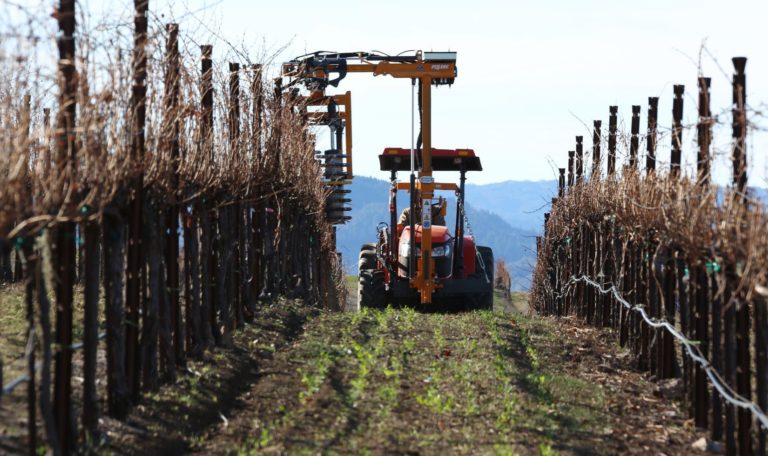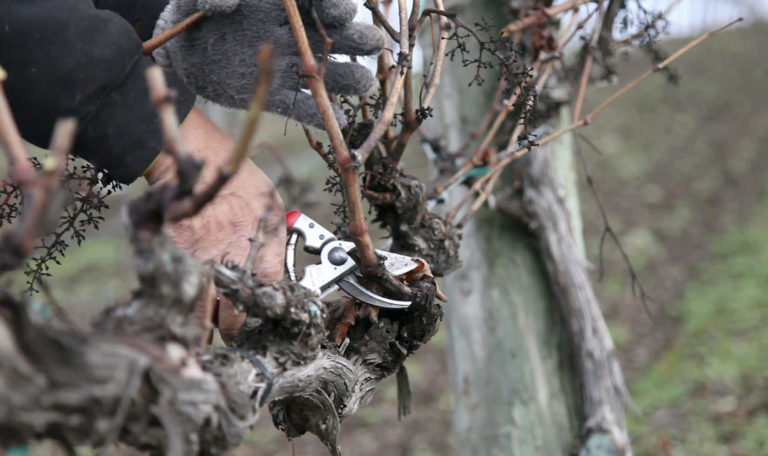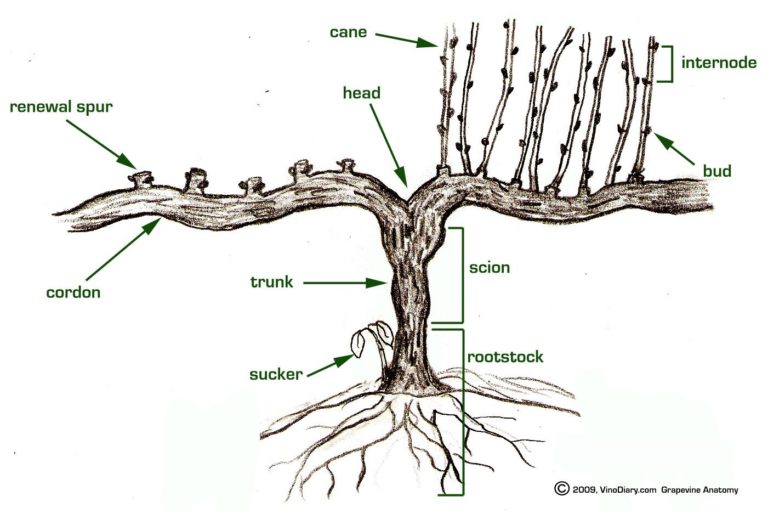Winter is an important time of rejuvenation in wine country. All winter long, the vineyards sleep, recharging for the intense growing season that is soon to come.
By November or December, the grapevines enter into their winter dormancy phase, losing the last of their leaves and leaving only bare cane shoots in their canopies. During this phase, the woody trunks and roots of the vines conserve energy and hoard valuable carbohydrate reserves, which will prove vital in the spring when the vines wake from their winter sleep and begin producing fruit. This dormant period is the ideal time for the vines to be pruned of their old wood (check out our Winter Grapevine Pruning Video to view this process).
Pruning Grapevines is Part Art, Part Science
Like winemaking, grapevine pruning is part science, part art, and doing it right determines the size of the harvest and the quality of the wine. Last year’s canes, which are now surrounded by a layer of wood, are removed to facilitate fresh new growth.
The work is laborious and expensive. It takes four people working nine hours a day, six days a week for about three months to prune Jordan’s 112 estate vineyard acres. It’s hard work that can lead to employee injuries without safety training—usually strained shoulders, hands or back muscles. Thanks to advances in grapevine pruning technology, we now have pruning machines to help lighten the load.
The machine pruner handles the first, most physical part of the cutting, and then our team will follow and hand prune the grapevines in the second phase. Preventing employee injuries is a top priority, but the benefits of machine pruning vastly improve efficiency and precision, too. Modern machine pruners have automated sensors that open and close their jaws around the metal stakes in the vineyard row and end posts. The pruners’ blades comb through the vineyard’s canopy and slice off the wood without cutting the delicate trellis wires. It’s a meticulous piece of equipment that allows us to maintain the quality of our viticultural practices, save time and expense, and keep our staff safe at the same time.
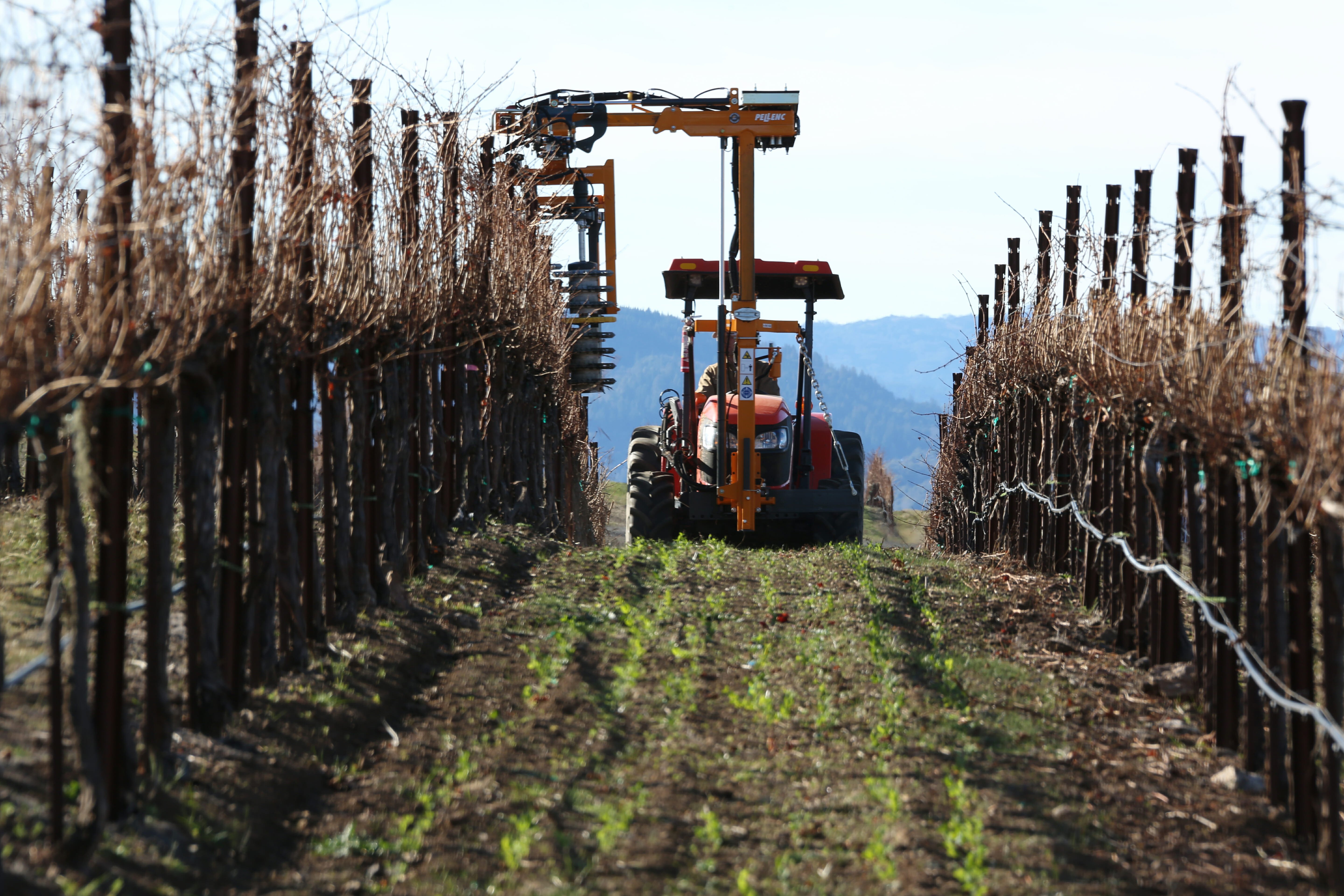
Our Two-Phase Grapevine Pruning Process
In the first pruning phase, we cut back last year’s growth, cutting each cane to about 12 to 15 inches from the trunk. Later in the season, we do “finish pruning,” during which we leave only the shoots that will produce fruit in the coming season.
Because this second pruning comes during the rainy season, it protects the permanent structure of the vines from fungi taking up residence in the newer growth. By trimming off this growth, we prevent the fungi from becoming established in the vine.
While machines can help with the first round of pruning, the second round can only be done properly by hand. We take each of the 2 ½ to 3-foot long canes down to one cane per spur and two buds per cane. Each of these buds will then grow into new canes that will bear this year’s fruit. Each cane will produce two clusters of grapes.
Pruning is important for maintaining the structural integrity, consistency, and predictability of the vineyard. If we know the acreage of the vineyard, along with the row and vine spacing, and each arm grows two shoots, and each shoot grows two clusters of fruit, we can fairly accurately estimate the yield of the year’s crop. Not only does pruning help us to predict our crop yields, but it also keeps the vineyard organized. And it looks nice, too.
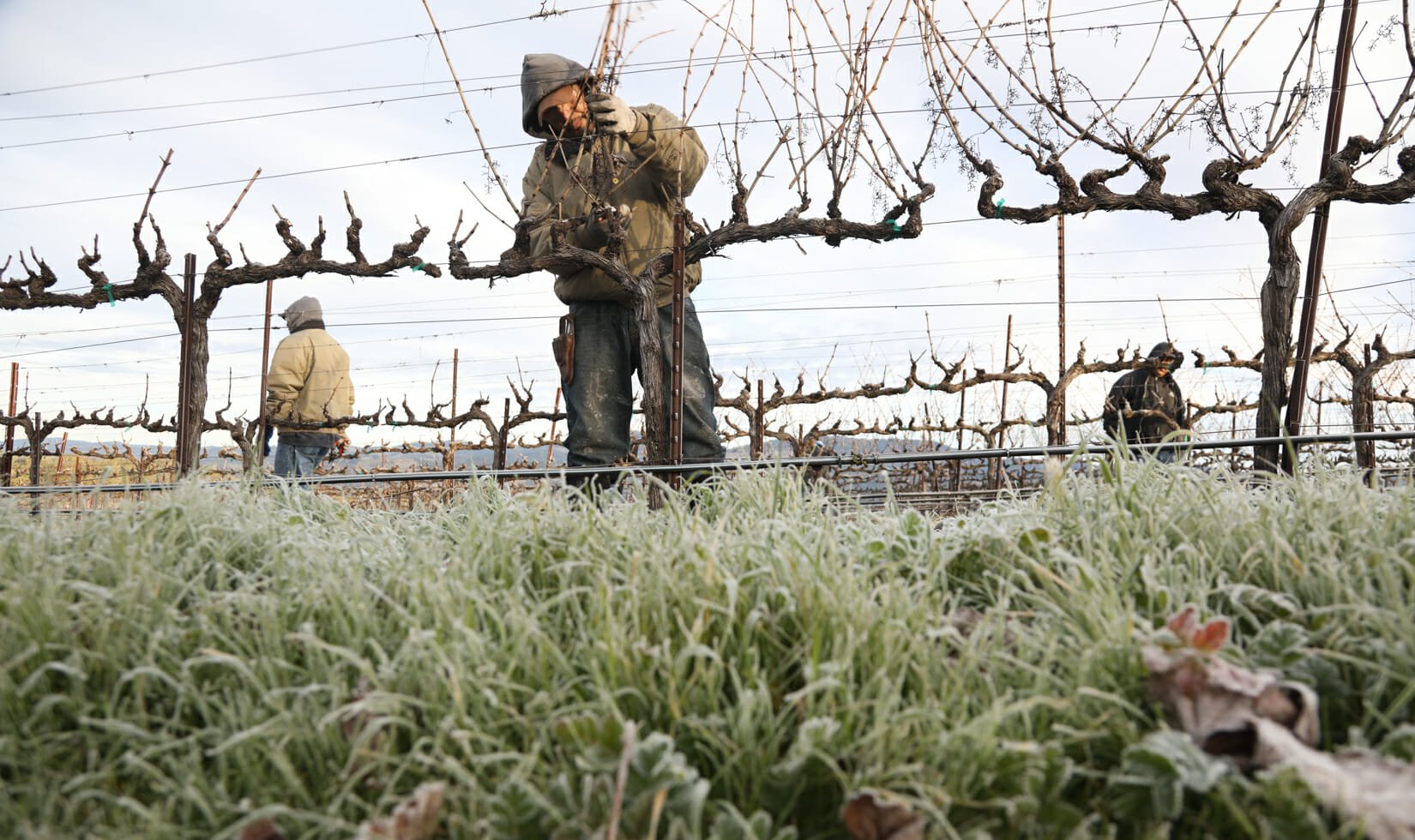
After the vineyard team finishes pruning the grapevines, we move on to pruning our 18 acres of olive trees. While it takes just one minute to prune a grapevine, an olive tree—due to its size and number of branches—requires 10 minutes of grooming to create proper shaping and light exposure. As with grapevines, proper pruning fosters fertility and efficient picking at harvest. Our former vineyard manager discusses the olive tree pruning process at Jordan and how we reuse our wood cuttings.


